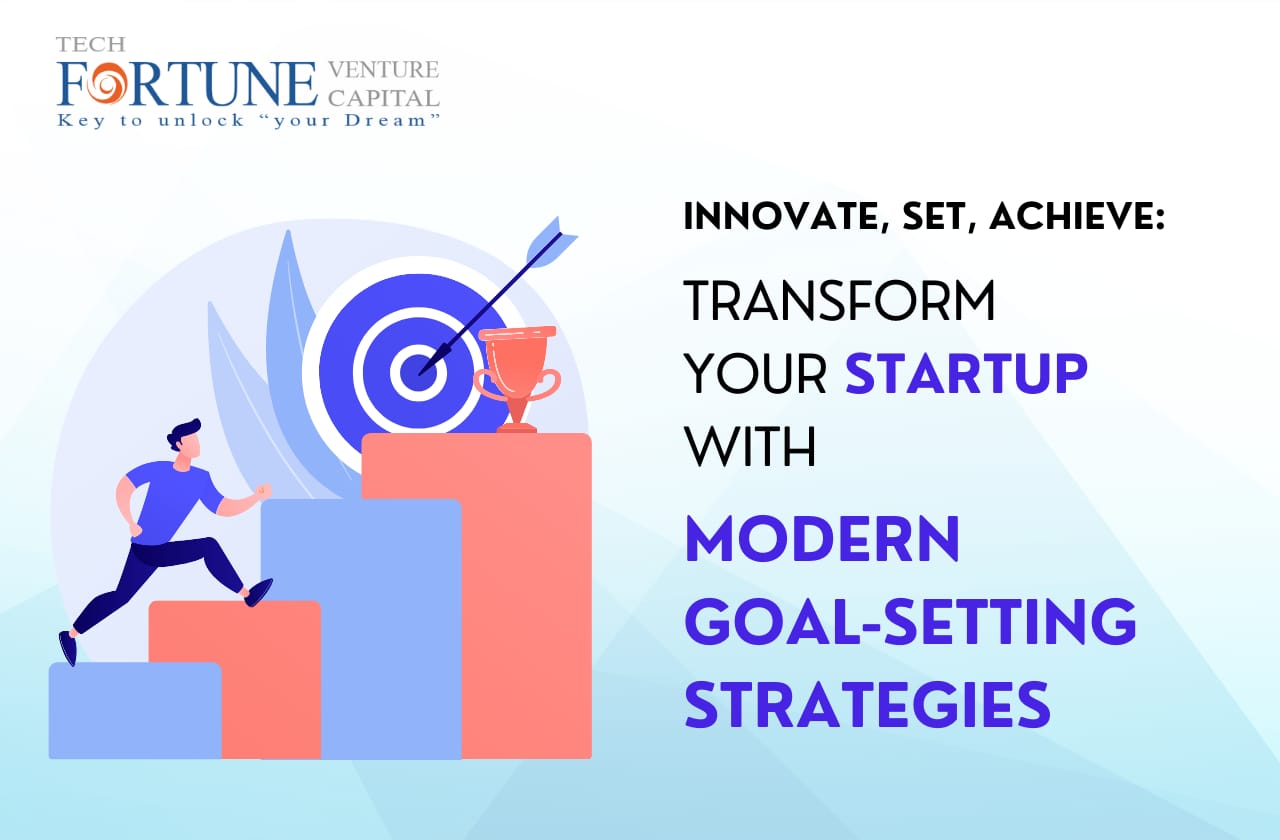“Innovate, Set, Achieve: Transform Your Startup with Modern Goal-Setting Strategies”
“Set bold goals, ignite innovation, and watch your startup soar with these powerful strategies for business achievement!“
Starting a business is a leap into the unknown, where uncertainty meets ambition. For startups, goal setting and achievement are crucial in navigating this complex landscape. With advanced methods and modern insights, startups can transform their ambitions into actionable objectives. This guide explores key strategies that go beyond conventional wisdom, offering innovative approaches for setting and achieving business goals in today’s fast-paced, tech-driven environment.
- Embrace Agile Goal Setting
Agile methodologies, originally developed for software development, have crossed industry borders to become a powerful tool for startups in all fields. Agile goal setting is about adaptability and iteration, rather than rigid, long-term planning. In a startup, change is constant. Technology evolves, market conditions shift, and customer preferences can fluctuate overnight.
To stay ahead, set short-term, flexible goals that can be adjusted quickly in response to new information. These should be broken into manageable milestones or sprints (typically 2-4 weeks). Each sprint focuses on a specific task that contributes to the overarching vision. Frequent evaluations and adjustments help avoid getting stuck in outdated plans and make it easier to pivot when necessary.
- Implement OKRs for Alignment and Focus
Objectives and Key Results (OKRs) have become the gold standard for goal setting at successful companies like Google and Intel. This framework helps early-stage startups align their entire team around measurable goals while staying focused on what truly matters.
- Objective: Define clear, ambitious objectives that inspire action.
- Key Results: Set quantifiable outcomes that indicate progress toward the objective.
For example, a startup might set the objective of expanding into new markets. Key results for this could include reaching a specific number of users in a target region or generating a predefined amount of revenue from that area. The beauty of OKRs lies in their transparency—they make it easy for everyone in the startup to see how their work ties into broader company goals. It promotes accountability and fosters a culture where measurable results are the top priority.
- Leverage Data for Smarter Decision-Making
In the modern business environment, data is not just a tool but a cornerstone of strategic goal setting. By leveraging analytics, startups can create more informed and predictive goals. This approach moves away from guesswork and relies on trends, customer behavior, and other key metrics to set realistic and achievable objectives.
For example, by analyzing user behavior data, a SaaS startup can set more precise goals for user acquisition and retention. They can identify which features customers use most, track engagement over time, and optimize their product to increase conversions. Data-driven goal setting ensures that objectives are grounded in reality and are based on actual market behavior rather than assumptions.
- Adopt SMARTER Goals
While the SMART (Specific, Measurable, Achievable, Relevant, Time-bound) goal-setting framework has been a staple for years, a modern startup should aim for SMARTER goals. This updated approach adds two crucial elements:
- Evaluate: Continually assess the relevance and progress of your goals to ensure they still serve the startup’s evolving needs.
- Revise: Be prepared to refine or even completely overhaul your goals based on real-time feedback and changing circumstances.
Startups exist in rapidly changing environments. What seemed like a great objective six months ago might be irrelevant today. The SMARTER framework helps businesses stay responsive and dynamic, allowing for continuous improvement rather than rigidly sticking to outdated targets.
- Incorporate AI and Automation
Artificial intelligence (AI) and automation tools are transforming goal setting and achievement for startups. These technologies can streamline operations, reduce manual effort, and improve decision-making accuracy. AI-driven insights can help predict market trends, optimize workflows, and identify opportunities for growth.
For example, AI algorithms can analyze vast datasets to help startups forecast demand, optimize pricing, or even predict customer churn. Automation tools can handle repetitive tasks such as email marketing, customer onboarding, and inventory management. With more time freed up for innovation, founders and their teams can focus on strategic goals that propel the company forward.
- Build a Culture of Accountability
Startups often face the challenge of wearing many hats, which can dilute focus. One of the keys to achieving business goals is fostering a culture of accountability. This means creating an environment where every team member understands the goals, their role in achieving them, and the consequences of missing targets.
To cultivate this culture, implement regular check-ins, transparent progress tracking, and a shared responsibility model. Tools like Trello, Asana, or Monday.com can help teams stay organized and ensure that everyone is held accountable for their tasks. Additionally, regular performance reviews and constructive feedback sessions help maintain motivation and commitment to the company’s vision.
- Foster Collaboration and Cross-Functional Teams
In startups, innovation thrives when different perspectives come together. One advanced strategy is to foster collaboration across different functions, creating cross-functional teams that work towards common goals. Breaking down silos between departments such as marketing, product development, and customer success helps ensure alignment.
Cross-functional teams drive creativity and holistic problem-solving, offering a wider range of ideas and approaches to achieving business goals. For example, a marketing team might collaborate with the product team to ensure that promotional efforts are aligned with product features. This tight collaboration can lead to more cohesive strategies, better execution, and faster achievement of objectives.
- Prioritize Customer-Centric Goals
In today’s highly competitive market, startups need to put customers at the heart of their goals. Customer-centric goal setting is about deeply understanding the needs and pain points of your target audience, then creating objectives that directly address those.
By continuously gathering customer feedback through surveys, interviews, and analytics, startups can set goals that enhance the user experience, improve product-market fit, and increase customer loyalty. For example, a customer-centric goal for a tech startup could be to reduce user onboarding time by 30% based on feedback that the process is currently too complex. Prioritizing customer satisfaction not only drives growth but also solidifies your brand’s reputation in the market.
- Incorporate Sustainability into Your Goals
Modern startups are increasingly recognizing the importance of sustainability, not only from an environmental perspective but also in terms of long-term business viability. Sustainability goals should be woven into the core business strategy. This can range from using eco-friendly materials in production to reducing energy consumption in operations.
Sustainability isn’t just a buzzword; it is becoming a key differentiator in the market. Consumers are more inclined to support brands that take responsibility for their environmental impact. Additionally, integrating sustainability into your goals can attract Angel Investors who are focused on ESG (environmental, social, and governance) criteria.
- Use Visualization and Visualization Tools
Visualization techniques, such as goal mapping or using tools like mind maps and flowcharts, can significantly aid startups in setting and achieving their goals. By clearly visualizing the steps needed to reach a particular objective, startups can create a more straightforward path to success.
In addition, modern visualization tools, such as Miro or Lucidchart, allow teams to collaborate in real time, making goal setting an interactive process. Visualization provides clarity, helps identify potential roadblocks, and keeps teams motivated by offering a clear picture of the goal.
Final Words:
“Get ready to win big! Learn how agile goals lead to major milestones and lasting success for your startup!”
Goal setting for startups today involves much more than simply writing down a list of objectives. It requires a deep understanding of market conditions, a willingness to embrace new technologies, and an unwavering focus on flexibility and adaptability. By incorporating advanced goal-setting strategies such as Agile, OKRs, data-driven decisions, and a customer-centric focus, startups can navigate the complexities of today’s market while achieving sustainable growth.
Achieving success as a startup requires more than just ambition; it demands advanced strategies, modern tools, and a laser focus on goals. By adopting agile methodologies, embracing data-driven decision-making, fostering collaboration, and prioritizing customer-centric objectives, your startup can unlock its full potential. Whether you’re just beginning or looking to scale, smart goal setting will be your roadmap to success.
Ready to take your startup to the next level? Partner with Techfortune Venture Capital today, and let us help you fuel your growth with the resources, insights, and strategies that turn bold ideas into thriving businesses.
FAQ:
The OKR (Objectives and Key Results) framework is highly effective for startups. It encourages ambitious objectives paired with measurable outcomes, ensuring alignment and focus across the team while promoting accountability and progress.
Startups should use agile goal-setting approaches, breaking long-term goals into shorter sprints. Regularly evaluating and revising goals ensures flexibility, allowing teams to pivot quickly in response to new opportunities or challenges.
Data-driven decision-making grounds goal setting in real-time analytics, helping startups identify trends, customer behaviors, and market opportunities. This enables the creation of realistic, targeted goals that drive sustainable growth and success.

